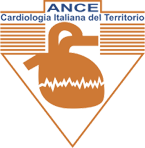Objective To study the effectiveness and safety of the non-vitamin K antagonist oral anticoagulants (novel oral anticoagulants, NOACs) dabigatran, rivaroxaban, and apixaban compared with warfarin in anticoagulant naïve patients with atrial fibrillation.
Design Observational nationwide cohort study.
Setting Three Danish nationwide databases, August 2011 to October 2015.
Participants 61 678 patients with non-valvular atrial fibrillation who were naïve to oral anticoagulants and had no previous indication for valvular atrial fibrillation or venous thromboembolism. The study population was distributed according to treatment type: warfarin (n=35 436, 57%), dabigatran 150 mg (n=12 701, 21%), rivaroxaban 20 mg (n=7192, 12%), and apixaban 5 mg (n=6349, 10%).
Main outcome measures Effectiveness outcomes defined a priori were ischaemic stroke; a composite of ischaemic stroke or systemic embolism; death; and a composite of ischaemic stroke, systemic embolism, or death. Safety outcomes were any bleeding, intracranial bleeding, and major bleeding.
Results When the analysis was restricted to ischaemic stroke, NOACs were not significantly different from warfarin. During one year follow-up, rivaroxaban was associated with lower annual rates of ischaemic stroke or systemic embolism (3.0% v 3.3%, respectively) compared with warfarin: hazard ratio 0.83 (95% confidence interval 0.69 to 0.99). The hazard ratios for dabigatran and apixaban (2.8% and 4.9% annually, respectively) were non-significant compared with warfarin. The annual risk of death was significantly lower with apixaban (5.2%) and dabigatran (2.7%) (0.65, 0.56 to 0.75 and 0.63, 0.48 to 0.82, respectively) compared with warfarin (8.5%), but not with rivaroxaban (7.7%). For the combined endpoint of any bleeding, annual rates for apixaban (3.3%) and dabigatran (2.4%) were significantly lower than for warfarin (5.0%) (0.62, 0.51 to 0.74). Warfarin and rivaroxaban had comparable annual bleeding rates (5.3%).
Conclusion All NOACs seem to be safe and effective alternatives to warfarin in a routine care setting. No significant difference was found between NOACs and warfarin for ischaemic stroke. The risks of death, any bleeding, or major bleeding were significantly lower for apixaban and dabigatran compared with warfarin.
BMJ 2016.
http://dx.doi.org/10.1136/bmj.i3189
A cura di Calogero Calcullo
